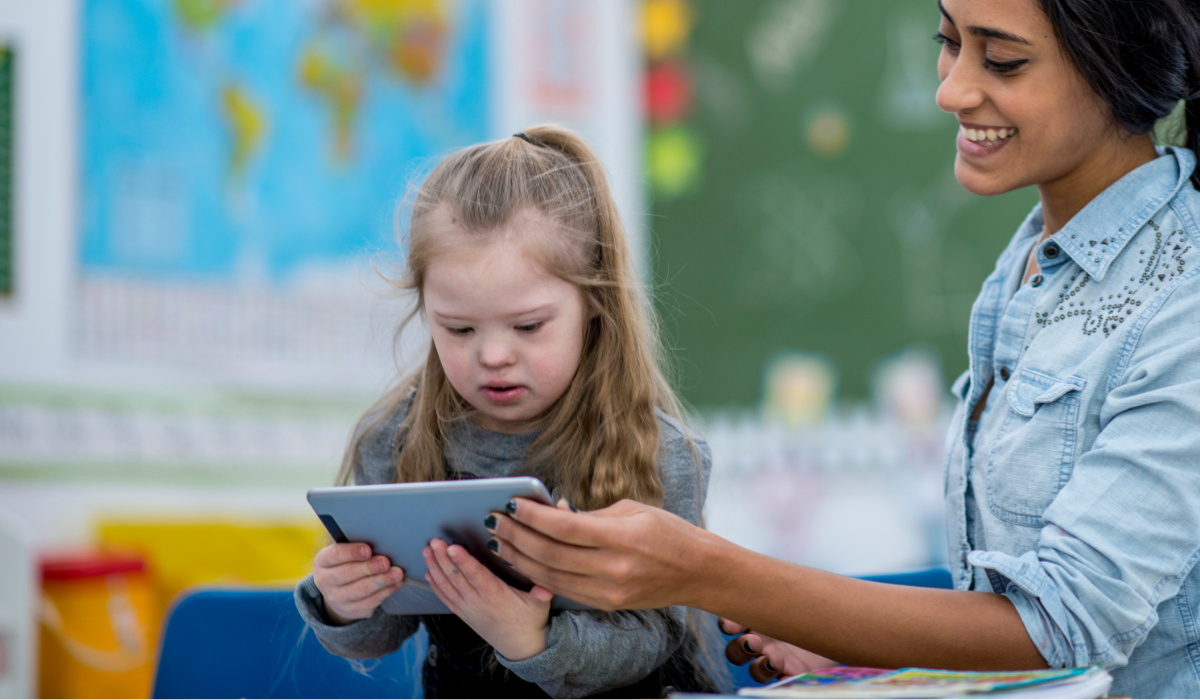What is assistive technology?
Assistive technology (AT) is any kind of technology that can be used to enhance the independence of a person with a disability. AT helps to level the playing field by providing them a way to fully engage in life’s activities. AT devices are tools to help overcome challenges and enable people living with disabilities to enhance their quality of life and lead more independent lives.
- Michigan Alliance for Families has partnered with Alt+Shift to produce an Assistive Technology Guide for Parents and Educators
What does the law say about AT?
Assistive technology is defined in Individuals with Disabilities Education Act (IDEA) as both the AT device and the training/support to choose and use an AT device.
- Devices―any item, piece of equipment, or product system that is used to increase, maintain, or improve the functional capabilities of a child with a disability (excludes a medical device that is surgically implanted, or the replacement of such device).
- Services―directly assists a child with a disability in the selection, acquisition, or use of an assistive technology device.
Besides IDEA, there are other assistive technology laws to help individuals access AT.
How does this fit into the IEP process?
Because assistive technology has so many benefits, all IEP teams are to consider the need for assistive technology. Any needs identified should be reflected in the Present Level Academic Achievement and Functional Performance (PLAAFP) statement in the IEP.
Start the process by requesting an assistive technology evaluation (sample AT request) . If you disagree with the evaluation, you have the right to an Independent Educational Evaluation.
- AT checklist for IEP teams Parent Center Hub
- Webinar: Partnering with Your ISD around AT Alt+Shift
- Assistive Technology and the IEP
- Assistive Technology for Infants, Toddlers, and Young Children with Disability
- Assistive Technology and Transition Planning
What should be included in the evaluation?
To determine the assistive technology needs of a child, an AT evaluation should assess the child’s strengths as well as areas of weakness.
- Using the SETT Framework for AT Selection decision making process for AT.
- AT Advocacy
- AT Minute videos with AT Tips from PACER
What about AT for teens and young adults?
It is important for teens and young adults to be part of the selection of AT that will help them at school and in life
These resources can help identify challenges technology can address.
- Exploring AT with Your Teen
- Exploring and Selecting Assistive Technology with Teens and Young Adults (video)
- Smart Home Technology for people with disabilities
More about Transition
What help is available in Michigan?
In Michigan, we have Alt+Shift, a statewide project focusing on assistive technology, universal design, and accessibility. Resources available on their website include
Additional Organizations and Initiatives in Michigan
- Communication is Key AAC Michigan non-profit dedicated to improving access to communication for those with complex communication needs
- Michigan’s Assistive Technology Program MDRC
- UCP Michigan: Assistive Technology programs include Ramps for Independence, Michigan AT Loan Fund
Organizations related to assistive technology:
- Learning Ally (previously known as Recording for the Blind & Dyslexic) a non-profit volunteer organization operating nationwide. It produces and maintains a library of educational accessible audiobooks to people who cannot effectively read standard print because of visual impairment, dyslexia or other disability.
- Bookshare, ensuring that all individuals with print disabilities have equal access to print materials. Bookshare is free for all U.S. students with qualifying disabilities.
- Center for Implementing Technology in Education identifies evidence-based practices for integrating instructional technology to support the achievement of all students.
Assistive Technology Considerations for Your Student


